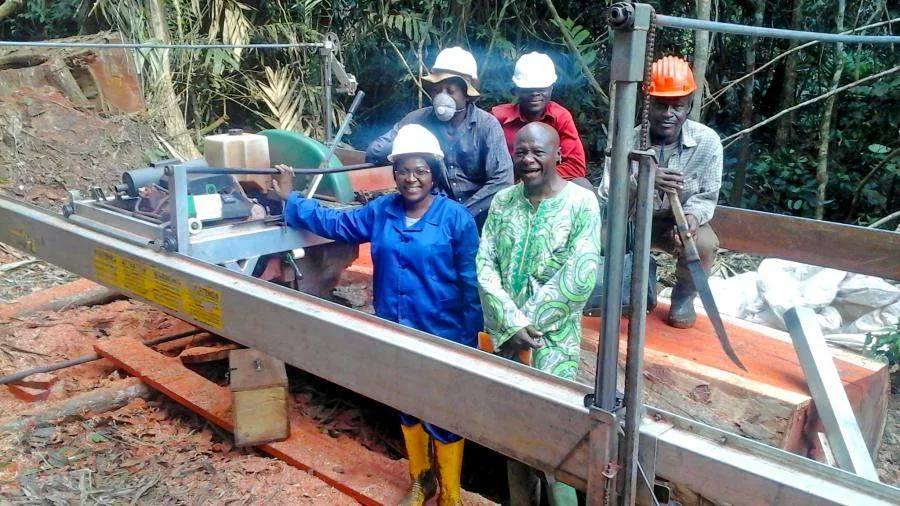Thanks to the exceptional richness of its forest ecosystems, Cameroon occupies the fifth rank in Africa in terms of biodiversity.
Although overall deforestation rates in the region are still lower than those in parts of the Amazon and southeast Asia, they have accelerated over the past few years, driven by the establishment of large-scale agricultural and mining operations. With the aid of government agencies, large firms have been seizing swaths of land in forested areas that were traditionally under ancestral tenure and are rapidly converting them to mono-crop plantations. The issue of forest conversion to agricultural land is significant in the countries of the Congo Basin, and particularly in Cameroon, where agriculture is a strategic focus and a key driver of development. The widespread clearing of forests for subsistence agriculture and the cultivation of cocoa is an equally alerting trend.
But even as the Congo Basin and other parts of the global tropics face these mounting threats, a promising alternative has emerged: the devolution of forest management to local communities. Across Latin America—where the Rainforest Alliance has a long history of collaborating with forest communities—the evidence clearly shows that community-managed forests can outperform strict protected areas when it comes to maintaining forest cover, while also providing economic development opportunities for marginalized groups. Building on a favorable national policy framework for community forestry development in Cameroon, the Rainforest Alliance is developing a model for community-owned forest enterprises.
Location
Cameroon, South Province
Project Objectives
Build four functional and economically viable community forest enterprises operating in two regions (Sangmelima and Kribi) linked to 12 community forests.
Project activities focused on two core areas:
- Social and technical capital: Strengthening of local governance and management of community-held forest resources through capacity building.
- Enterprise development: Small business development and the linking of community-based enterprises with high-value domestic and international markets.
Partner communities
Our work focused on two groups of community forests in the south province in Cameroon, adjacent to the the Dja Biosphere Reserve and the Campo-Ma’an National Park. Both protected areas harbor an array of endangered species including lowland gorillas, African forest elephants, western chimpanzees, and grey-necked rockfowl. Approximately 10,000 people in 12 community forests have received technical support through this project. Like most forest communities, these groups have a tremendous knowledge of biodiversity, and their harvesting of forest products—be it for domestic consumption or trade—generates critical household income and provides the opportunity for sustainable economic growth.

Goals/Desired Impacts
This five-year project was concluded in 2015. The work with forest communities is now being carried forward with other funding mechanisms to provide continuity, and ensure that promising results can be consolidated.
Our work has benefited 12 communities that are home to a total of approximately 10,000 individuals, including members of the Baka peoples. We have collaborated with these communities to lay the groundwork for the harvest of timber and non-timber forest products, while strengthening their internal governance and enabling them to operate in a competitive market environment. Additionally, we have facilitated the establishment of four local community-owned forest enterprises as a tool for pooling investments in equipment and social infrastructure, increasing negotiating power and improving access to markets. This work has been carried out in a participatory manner, in cooperation with two local NGOs.
Despite challenging conditions, the communities have made significant progress over the past five years. As a result of our support, they’ve approved forest management plans that cover a total of 74,000 acres (30,000 ha), forged business alliances with buyers, and nine communities have signed sales contracts—a major step forward for community forests in the region.
We have also worked to diversify their forest production beyond timber by encouraging the collective harvesting, processing, and marketing of wild mangoes (Irvingia gabonensis), which are used to make edible pastes, and the Njansang nut, a non-timber forest product processed into oil and body soap. These activities directly involve some 200 people and provide substantial benefits to women and indigenous households, significantly increasing what they earn from the forest. Income from the sale of timber has doubled, and among those communities that have taken control of forest harvesting, revenues have increased more than five-fold, a tremendous improvement that lays the foundation for further investment in community-forest enterprise development. Moreover, the collective marketing of wild mango has increased sales earnings by an average of more than 75 percent in one location.
Partner Organizations
- Organisation pour la Protection de la Forêt Camerounaise et de ses Ressources (OPFCR)
- Cercle de Promotion des Forêts et des Initiatives Locales de Développement (CEPFILD)
Funder
Congo Basin Forest Fund (CBFF)



